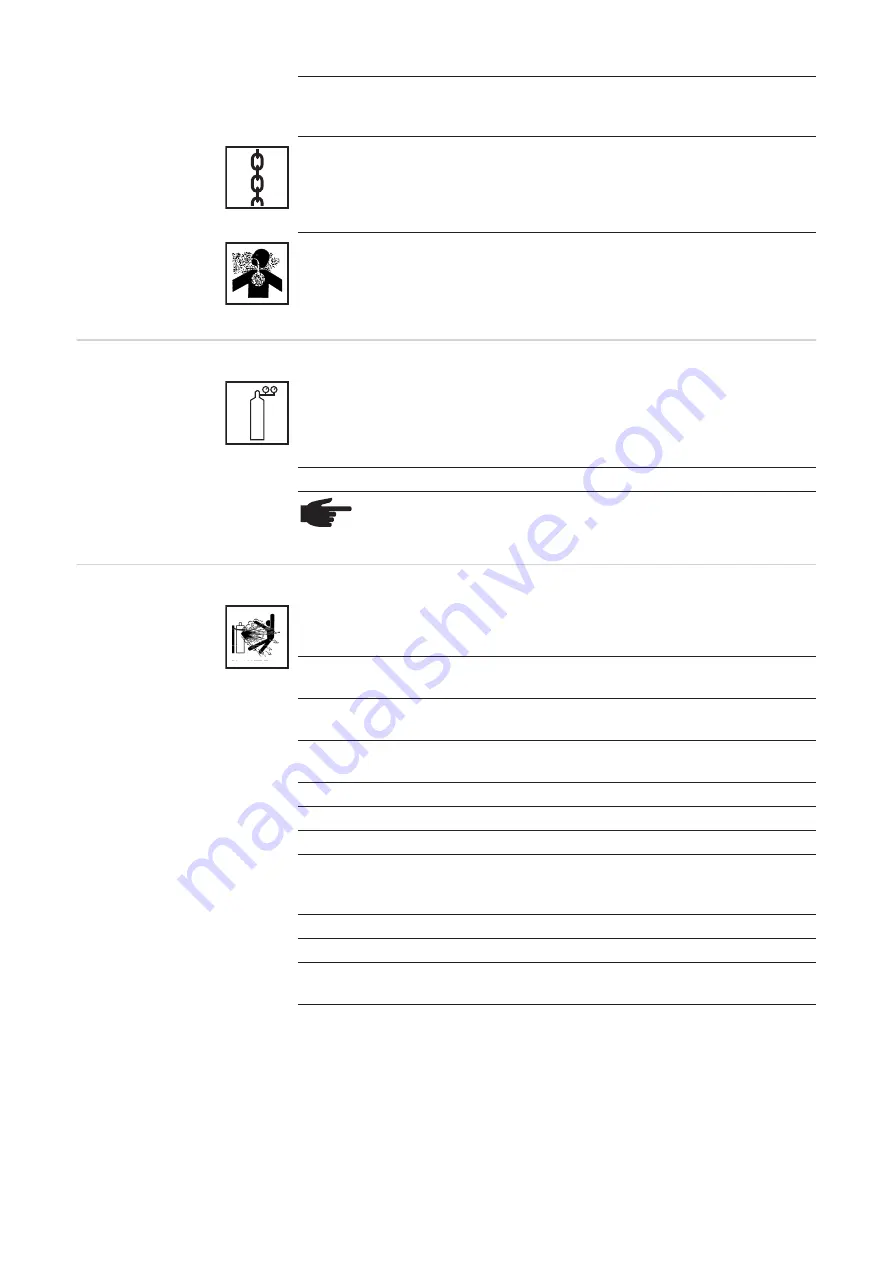
14
Factors affecting
welding results
Danger from
shielding gas cyl-
inders
If the device has a carrying strap or handle, this is intended solely for carrying
by hand. The carrying strap is not to be used if transporting with a crane, coun-
terbalanced lift truck or other mechanical hoist.
All lifting accessories (straps, handles, chains, etc.) used in connection with
the device or its components must be tested regularly (e.g. for mechanical
damage, corrosion or changes caused by other environmental factors).
The testing interval and scope of testing must comply with applicable national
standards and directives as a minimum.
Odourless and colourless shielding gas may escape unnoticed if an adapter
is used for the shielding gas connection. Prior to assembly, seal the device-
side thread of the adapter for the shielding gas connection using suitable Tef-
lon tape.
The following requirements with regard to shielding gas quality must be met if
the welding system is to operate in a correct and safe manner:
-
Size of solid matter particles < 40 μm
-
Pressure dew point < -20 °C
-
Max. oil content < 25 mg/m³
Filters must be used if necessary.
NOTE!
There is an increased risk of soiling if ring mains are being
used
Shielding gas cylinders contain gas under pressure and can explode if dam-
aged. As the shielding gas cylinders are part of the welding equipment, they
must be handled with the greatest of care.
Protect shielding gas cylinders containing compressed gas from excessive
heat, mechanical impact, slag, naked flames, sparks and arcs.
Mount the shielding gas cylinders vertically and secure according to instruc-
tions to prevent them falling over.
Keep the shielding gas cylinders well away from any welding or other electrical
circuits.
Never hang a welding torch on a shielding gas cylinder.
Never touch a shielding gas cylinder with an electrode.
Risk of explosion - never attempt to weld a pressurised shielding gas cylinder.
Only use shielding gas cylinders suitable for the application in hand, along with
the correct and appropriate accessories (regulator, hoses and fittings). Only
use shielding gas cylinders and accessories that are in good condition.
Turn your face to one side when opening the valve of a shielding gas cylinder.
Close the shielding gas cylinder valve if no welding is taking place.
If the shielding gas cylinder is not connected, leave the valve cap in place on
the cylinder.
The manufacturer's instructions must be observed as well as applicable na-
tional and international regulations for shielding gas cylinders and accesso-
ries.

































